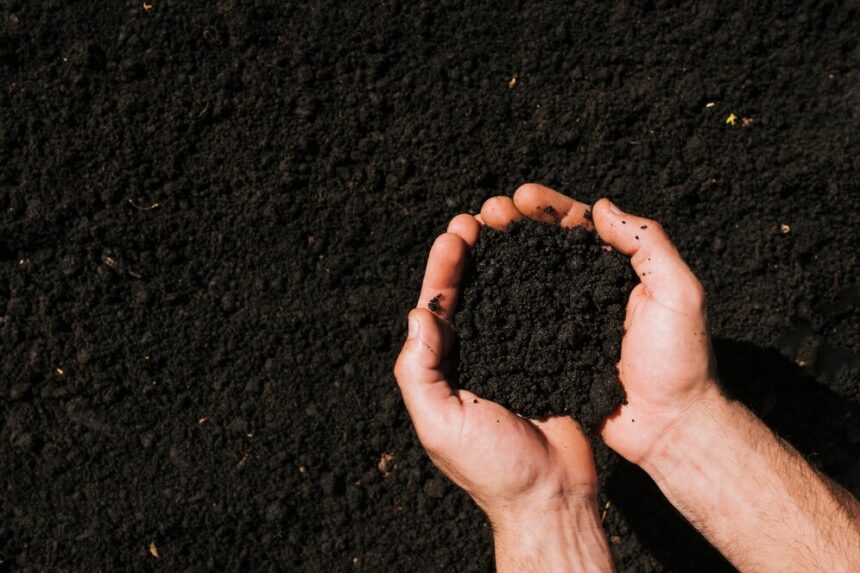Soil fertility is essential for healthy plant growth, and understanding your soil’s fertility is the first step toward improving crop yields and garden productivity. While professional soil tests can be expensive, there are several ways to test your soil’s fertility at home. By conducting simple tests, you can better understand the nutrient content of your soil and make informed decisions about amendments and fertilizers. Here’s how to test soil fertility at home.
1. Visual Inspection
The first step in assessing soil fertility is a visual inspection. Healthy, fertile soil tends to have a rich, dark color, indicating the presence of organic matter. If your soil looks pale or sandy, it may lack essential nutrients and organic content.
Look for the following signs:
- Healthy soil: Dark brown to black color, crumbly texture, and lots of earthworms.
- Poor soil: Light brown or gray color, compacted texture, and minimal biological activity.
2. Soil Texture Test
Soil texture plays a key role in its fertility. Soil is made up of three main particle types: sand, silt, and clay. To check your soil texture, you can do a simple “jar test.”
Steps for the Jar Test:
- Collect a sample of soil from about 10-15 cm below the surface in several areas of your garden.
- Remove any debris, such as roots and stones.
- Fill a clean jar halfway with soil and then fill it with water.
- Shake the jar vigorously to mix the soil with water.
- Let the jar sit undisturbed for 24 hours.
After 24 hours, the soil will settle in layers. The bottom layer is the sand, followed by silt, and the top layer will be clay. The proportion of each determines your soil texture (e.g., sandy, loamy, or clayey soil). Loamy soil, which contains a balanced amount of sand, silt, and clay, is usually the most fertile.
3. pH Test
Soil pH affects nutrient availability, and testing pH is one of the simplest ways to assess soil fertility. You can use a store-bought soil pH test kit or a DIY method.
DIY Vinegar and Baking Soda Test:
- Take two samples of your soil, one from the top layer and another from deeper down.
- For one sample, add a little vinegar. If it fizzes, your soil is alkaline (pH above 7).
- For the other sample, add a little baking soda. If it bubbles, your soil is acidic (pH below 7).
- If neither sample reacts, your soil is likely neutral (pH around 7).
However, while this method can give you a rough idea, a pH test kit provides more accurate results. Most plants thrive in soils with a pH between 6.0 and 7.5, so adjusting your soil’s pH might be necessary depending on your plants’ needs.
4. Nutrient Deficiency Test
While a pH test can tell you if your soil is too acidic or alkaline, it doesn’t provide information about specific nutrient levels. One way to spot nutrient deficiencies is by observing plant symptoms.
- Yellowing leaves (chlorosis): Often a sign of nitrogen, iron, or magnesium deficiency.
- Stunted growth: Can indicate a lack of phosphorus or potassium.
- Pale or speckled leaves: Could suggest a calcium or magnesium deficiency.
By knowing the symptoms of nutrient deficiencies, you can adjust your fertilization practices to address the needs of your plants.
5. DIY Soil Fertility Test Kits
For more precise measurements, you can purchase affordable soil test kits at garden centers or online. These kits typically come with instructions and include reagents that will help you determine levels of key nutrients like nitrogen (N), phosphorus (P), and potassium (K), as well as pH. Follow the instructions on the kit carefully to get accurate results.
6. Compost and Organic Matter Addition
Even without formal testing, you can improve soil fertility by adding organic matter such as compost, manure, or cover crops. Organic matter enriches the soil with essential nutrients, improves soil structure, and encourages beneficial organisms like earthworms. Regularly adding organic material is one of the best ways to ensure your soil remains fertile.
7. Soil Amendments Based on Results
Once you have tested your soil, you can take steps to amend it based on the results:
- Low pH (Acidic soil): Add lime to raise the pH.
- High pH (Alkaline soil): Add sulfur or organic matter to lower the pH.
- Nitrogen deficiency: Use organic or synthetic nitrogen fertilizers, such as compost or blood meal.
- Phosphorus deficiency: Bone meal or rock phosphate can be added to boost phosphorus levels.
- Potassium deficiency: Wood ash or potassium sulfate can help correct a potassium deficiency.
Testing soil fertility at home is an effective way to ensure your plants receive the nutrients they need for optimal growth. Whether using DIY methods or purchasing a soil test kit, understanding your soil’s texture, pH, and nutrient content is key to creating a productive and healthy garden. Regular soil testing allows you to make informed decisions, adjust fertilizers and amendments as needed, and keep your soil fertile for years to come.







